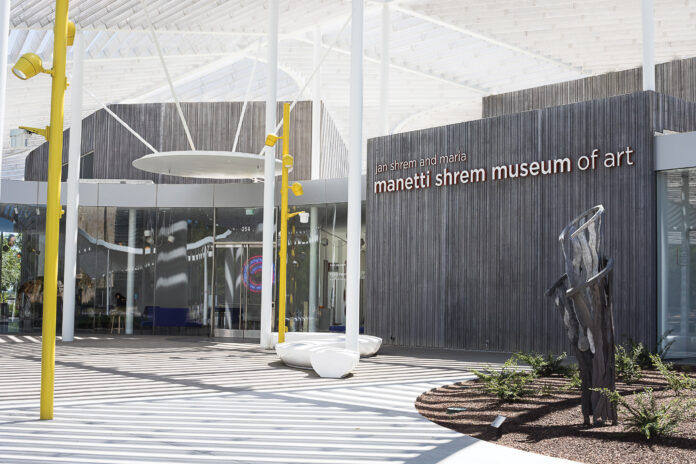Artificial intelligence acts as creative expression
By ANA BACH — arts@theaggie.org
On Nov. 3, Nettrice Gaskins came to UC Davis to discuss her work in the art and artificial intelligence (AI) field. The UC Davis Design Department and others witnessed her talk titled “Theory, Content and Style for the AI Revolution” at the Jan Shrem and Maria Manetti Shrem Museum of Art. Gaskins went into great depth about her methods surrounding her creative process as well as how others can benefit from using AI in other fields.
In her presentation, Gaskins used her art to explain her motivations and cultural critiques. Her work centers on African Americans, Afrofuturism and STEAM (Science,
Technology, Engineering, Art and Math) education for historically marginalized communities.
She began her talk by discussing several concepts she considers when creating her art. Gaskins first drew attention to the innovation of form, then explained the potential difficulties of using AI software to create art. Utilizing vernacular and prompts to make illustrations while also creating a visual abstraction of the subject that matches her vision for the project is one of the challenges with digital art. Another relevant component to consider is mechanical reproduction. Copying, redrawing and remixing all fall within the medium of technology, where found objects (or in this case, concepts) are reappropriated into something new. Digital manipulation of visual content is the essence of AI’s function in the art world.
“It’s like taking things from the environment and innovating them,” Gaskins said.
Her main emphasis was placed on the phenomenon of generative AI, describing the culmination of AI, machine learning and in-depth learning. Generative AI has the ability to produce several versions of an image in a short amount of time by using a neural style transfer that can adopt the visual appearance of another image.
“It’s a new understanding and amplification of modern art forms,” Gaskins said.
As a means of practicing the different techniques Gaskins researched, she worked on different projects playing with generative AI every day for a full year to better understand form and content. Additionally, she took tapestries and applied specular reflection, amplifying the light on an image, to enhance the shine as fading for certain subjects. Gaskins continues to open new trains of thought for the limitless possibilities that AI has, especially in the art world.
As productive as AI has been in more fields than one, there have been some drawbacks with biases that have been embedded within the algorithms. One example that Gaskins touches on is typing in simple prompts such as, “a picture of a felon.” The images that would come up for her were mainly mugshots of Black men or photos of them in jumpsuits. In some cases, pictures of baboons and other orangutans would pop up as search results. This is just one example of a prompt that generates inherent racial prejudice.
Another prompt that she typed in asked for “portraits of a lawyer” in which she received many images of men posing in suits. Not a single portrait of a woman was generated. These biases are slowly but surely being reprogrammed, as many people are using more detailed prompts to help the software reassess what images are popping up.
“There is a humanity when humans intervene in the process. The machine is just assisting the thought process,” Gaskins said.
Gaskins received a doctorate in digital media from the Georgia Institute of Technology and an M.F.A. in art and technology from the School of the Art Institute of Chicago. Additionally, she has written a book titled, “Techno-Vernacular Creativity and Innovation,” where she discusses her methods of STEAM learning that engage students from historically marginalized communities in culturally relevant and inclusive maker education. Her work has been exhibited at a Leoni Art Project group show in Genoa, Italy, the Museum of Contemporary African Diasporan Arts in Brooklyn, New York and the Smithsonian’s “FUTURES” exhibition.
AI has generated some thoughtful commentary from a wide range of opinions on whether it takes away from valuable learning experiences for students or if technological efficiency is beneficial in the research field. Gaskins gives us a reason to believe that the practical nature of it isn’t the only benefit. Experimenting, or rather “painting with pixels,” is just one of many ways to redesign our way of thinking about the traditional societal processes that continue to evolve faster than ever before.
“I want to remix algorithms. I don’t want one, I want five. I want to test the limit,” Gaskins said. “Why do it? Because it’s cool.”
Written By: Ana Bach — arts@theaggie.org




